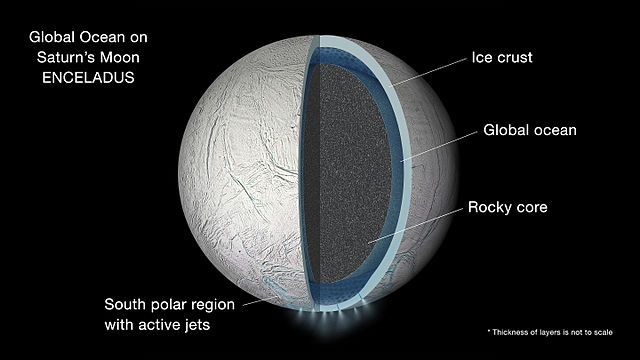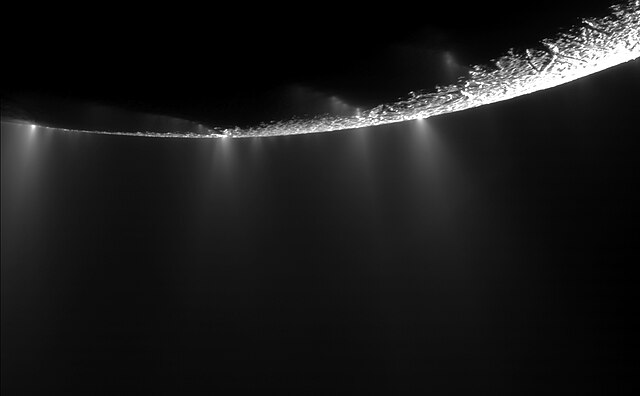A cryovolcano is a type of volcano that erupts gases and volatile material such as liquid water, ammonia, and hydrocarbons. The erupted material is collectively referred to as cryolava; it originates from a reservoir of subsurface cryomagma. Cryovolcanic eruptions can take many forms, such as fissure and curtain eruptions, effusive cryolava flows, and large-scale resurfacing, and can vary greatly in output volumes. Immediately after an eruption, cryolava quickly freezes, constructing geological features and altering the surface.
Diagram of Enceladus's south polar plumes, an example of explosive cryovolcanism, and Enceladus's internal ocean
Enceladus's south polar plumes
Edifice of Wright Mons, a likely cryovolcano on Pluto. Coleman Mons can be seen just southwest of Wright Mons
Ruach Planitia and Tuonela Planitia, Triton
A volcano is a rupture in the crust of a planetary-mass object, such as Earth, that allows hot lava, volcanic ash, and gases to escape from a magma chamber below the surface.
Sabancaya volcano erupting, Peru in 2017
Lakagigar fissure vent in Iceland, the source of the major world climate alteration of 1783–84, has a chain of volcanic cones along its length.
Skjaldbreiður, a shield volcano whose name means "broad shield"
Izalco volcano, the youngest volcano in El Salvador. Izalco erupted almost continuously from 1770 (when it formed) to 1958, earning it the nickname of "Lighthouse of the Pacific".








